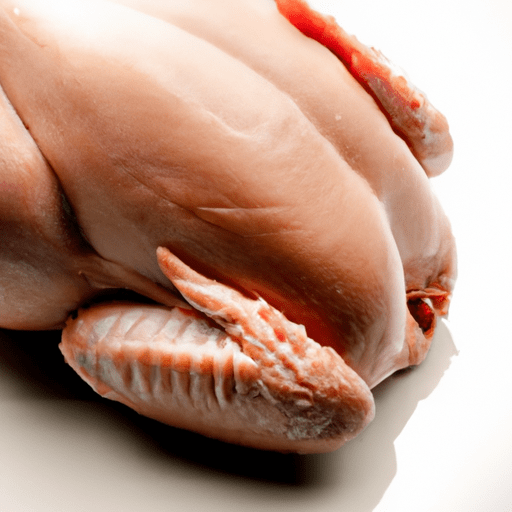The Delightful Skin-On Boneless Turkey Breast: A Versatile and Nutritious Delicacy
When it comes to poultry, turkey is often associated with special occasions and family feasts. While most people are familiar with the traditional roast turkey, there’s another cut that deserves some attention and praise—the skin-on boneless turkey breast. Renowned for its succulent meat, rich flavor, and versatility, this tender cut offers a delightful culinary experience that is worth exploring.
A Taste Sensation on Every Plate
The skin-on boneless turkey breast boasts tender and juicy meat with a mild, delicate flavor. The skin, when properly prepared, adds a delectable crispness and an extra layer of succulence to the overall dining experience. The combination of tender meat and crispy skin creates a contrast that leaves food enthusiasts craving for more with every bite. Due to its mild taste profile, the skin-on boneless turkey breast can easily adapt to various cooking and flavoring techniques, making it an ideal choice for a wide array of culinary creations.
Versatile and Convenient in the Kitchen
The skin-on boneless turkey breast is a versatile cut that holds the power to elevate your culinary repertoire. This cut offers endless possibilities when it comes to cooking methods, flavors, and accompanying ingredients. Whether you’re grilling, roasting, pan-searing, or even slow-cooking, this cut of turkey effortlessly delivers exceptional results.
The boneless nature of this turkey breast makes it incredibly easy to handle and carve, saving you time and effort in the kitchen. The removal of bones ensures that every slice is pure, juicy meat, allowing for consistent cooking throughout.
Nutritional Value of Skin-On Boneless Turkey Breast
Apart from being a flavorful addition to your culinary endeavors, the skin-on boneless turkey breast also offers notable nutritional benefits. Turkey, in general, is recognized for being an excellent source of lean protein, making it a fantastic choice for individuals who prioritize a health-conscious diet.
Additionally, the turkey breast is particularly renowned for its low fat content and high protein levels, making it an excellent choice for anyone looking to minimize their fat intake while still enjoying a satisfying meal. Furthermore, this cut is rich in essential vitamins and minerals, including vitamin B6, niacin, phosphorus, selenium, and zinc. These nutrients play vital roles in supporting overall health, including immune function, metabolism, and brain health.
Historical Significance and Interesting Facts
Turkey has a long-standing history that dates back centuries. The domestication of turkeys can be traced back to ancient Mexico, where they were first domesticated by the indigenous people. The Spanish explorers are credited with introducing turkeys to Europe during the 16th century, spreading their popularity across the continent.
Ever since then, turkey has become a beloved and revered poultry option around the world. It has become a symbol of celebration, particularly during Thanksgiving in the United States, where turkey is the centerpiece of the traditional holiday feast.
Conclusion
The skin-on boneless turkey breast is a culinary gem that deserves recognition beyond the typical holiday festivities. Its succulent meat, versatile nature, and fantastic nutritional qualities make it a must-try for any food enthusiast. Whether you’re roasting it with your favorite herbs and spices, grilling it to perfection, or exploring other creative cooking methods, this cut is sure to impress your taste buds and elevate your culinary creations. So, next time you’re looking for a poultry option worthy of celebration, consider the delightful skin-on boneless turkey breast.
Skin on Boneless Turkey Breast
Origin: Turkey is native to North America and was domesticated by Native Americans thousands of years ago. The turkey is a large bird, and boneless turkey breast is a cut of meat obtained from the chest area of a turkey. The skin on boneless turkey breast refers to the natural skin that covers the meat.
Common Uses: Boneless turkey breast is a versatile ingredient commonly used in various dishes. It can be roasted, grilled, or pan-fried to make tender and flavorful slices. The skin on boneless turkey breast helps to keep the meat moist during cooking and adds a crisp texture when properly prepared.
Nutritional Benefits: Boneless turkey breast is a lean source of protein and is naturally low in fat. It is also rich in essential nutrients such as vitamins B6 and B12, selenium, and phosphorus. It is a good source of amino acids, which are the building blocks of proteins.
Unique Properties: The skin on boneless turkey breast helps to retain moisture during cooking, contributing to the tenderness and juiciness of the meat. It is common to season the skin with herbs and spices to enhance the flavor. Additionally, the skin can become crispy when cooked at higher temperatures, adding a delightful texture contrast to the meat.
Historical Significance: Turkey has a significant historical significance, as it is associated with the Thanksgiving holiday in the United States. It is believed that turkey was served at the first Thanksgiving feast celebrated between the Pilgrims and Native Americans in 1621. Today, turkey remains a traditional centerpiece on Thanksgiving tables across the country.
Remember to always follow proper handling and cooking guidelines to ensure the safety and enjoyment of boneless turkey breast.




Use the share button below if you liked it.
It makes me smile, when I see it.